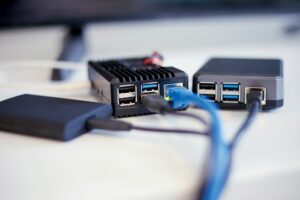Computer operating systems: Windows, macOS, and Linux and how they function

Computer operating systems: Windows, macOS, and Linux and how they function
Operating systems (OS) are essential to the operation of any computer, regardless of how powerful or simple the machine may be. In addition to managing hardware, running applications, allocating resources, and providing the interface that you deal with on a regular basis, the operating system (OS) is a quiet powerhouse. Windows, macOS, and Linux are the three most prominent operating systems in the realm of personal and professional computing as compared to the numerous other operating systems that are now available. Although they both have the same objective, which is to make computers useable, they are quite different from one another in terms of design, philosophy, and performance.
1. What exactly is an operating system, though?
A computer’s operating system serves as the intermediary between the user and the hardware of the machine. It regulates the manner in which software communicates with the central processing unit (CPU), memory, storage, and peripherals. When it comes down to it, it transforms human directions into instructions that machines can understand. In the absence of an operating system, your computer would be nothing more than a collection of inactive components that are unable to carry out any real-world functions.
An operating system is responsible for the following four essential functions:
- Process management is the process of controlling how applications execute and how they share time on the CPU.
- Memory management is the practice of effectively allocating random access memory (RAM) to running programs.
- The administration of the file system is responsible for organizing and retrieving data from storage.
- Keyboards, printers, and monitors are examples of input/output devices that are coordinated via the process of device management.
2. The Kernel, which is the core of operating systems
Kernel, which serves as the primary control center, is the component that is at the core of any operating system. It is responsible for managing hardware communication and enforcing access restrictions, and it functions at the most fundamental level of the system.
- Windows makes use of a hybrid kernel, which incorporates aspects of both monolithic and microkernel computer architectures.
- macOS makes use of a hybrid kernel that leverages Apple’s XNU (X is Not Unix) architecture as its foundation.
- Because Linux is based on a monolithic kernel, the majority of system services are able to function inside the same kernel area, which improves both efficiency and speed.
- The way in which the operating system manages performance, stability, and hardware compatibility is impacted by each technique.
3. Windows, the Industry Standard for Everything
Microsoft Windows continues to be the desktop operating system that is used the most all around the world, and it dominates both consumer and corporate computing. It places an emphasis on user familiarity, enterprise-level support, and wide interoperability and compatibility.
Principal Characteristics:
- Graphical User Interface (GUI): This kind of user interface is well-known for its intuitive design, which includes icons, menus, and taskbars.
- The Software Ecosystem provides support for a vast array of programs, such as those used for gaming, productivity, and corporate solutions.
- The driver support is compatible with a wide range of hardware and works without any problems.
- Developers are able to execute Linux tools directly on Windows thanks to the Windows Subsystem for Linux (WSL) that is available.
Ease of use, widespread availability of software, and robust corporate integration are the strengths of this product.
Weaknesses include a greater susceptibility to infection, a strong reliance on resources, and a restricted capacity to customize the system in comparison to Linux.
4. macOS: a combination of elegance and efficiency
Known for its streamlined appearance, reliability, and seamless interaction with Apple gear, macOS is a software operating system that was created by Apple. It is a system that is built on Unix, which provides it with a high level of security and dependability.
Principal Characteristics:
- Enhanced Hardware Integration: Because macOS is only compatible with Apple products, it has been enhanced in terms of both its performance and its energy efficiency.
- Apple Watches, iPhones, and iPads are all part of the Unified Ecosystem, which ensures seamless continuity.
- The built-in security layers, sandboxing, and file system safeguards all contribute to the system’s stability and security.
- User interface that prioritizes simplicity, minimalism, and visual consistency in its design strategy.
- The product is very solid, safe, and visually sophisticated; it is an excellent choice for creative workers.
- Weaknesses include a greater cost of entry, fewer gaming support choices, and a limited selection of hardware alternatives.
5. The independence and adaptability of Linux
When it comes to open-source computing, Linux is the undisputed giant. Linux is a free and community-driven operating system, which means that anybody may change, distribute, and use it. This is in contrast to Windows and macOS. From servers and supercomputers to Android smartphones and Internet of Things platforms, it is the driving force behind everything.
Principal Characteristics:
- Users are able to read and modify the source code since it is open source.
- Distributions (Distros): Available in a wide variety of versions, including Ubuntu, Fedora, Debian, and Arch Linux, each of which is designed to meet a certain set of requirements.
- Utilizing command-line tools, Terminal-Based Control provides a comprehensive approach to managing the system.
- Security and efficiency: resistant to the majority of malware and using a minimal amount of resources during application.
- Strong points include a high degree of adaptability, effectiveness, and safety; it is perfect for developers and more experienced users.
- The steeper learning curve, restricted interoperability with standard software, and less user-friendly interface for novices are all considered to be weaknesses.
6. The architecture of the system and the management of files
In Windows, the New Technology File System (NTFS) is used. This file system was developed for more sophisticated capabilities like as encryption and compression.
- apple’s operating system uses the Apple File System (APFS), which is geared for encryption and solid-state storage.
- Linux: Supports a variety of file systems, the most popular of which being EXT4, which is renowned for its speed and reliability.
- The efficiency with which data is stored, retrieved, and protected is determined by these systems, which in turn has an effect on both performance and dependability.
7. Safety and Personal Confidentiality
Security continues to be one of the distinctions that distinguishes these systems from one another.
- Even though recent versions of Windows contain Windows Defender, BitLocker, and enhanced sandboxing, Windows is subject to more frequent assaults than other operating systems because of its enormous user base.
- This additional security is achieved by macOS via the use of Unix permissions, Gatekeeper, and XProtect.
- since of its modular architecture, community updates, and stringent user permissions, Linux is the most secure of the three operating systems since it was explicitly designed to be thus.
- Linux and macOS, in comparison to Windows, often provide users who are concerned about their privacy a greater degree of transparency and control over the data collecting process.
8. Compatibility of Software and Ecosystem-Based Systems
When it comes to gaming, corporate applications, and support for third-party gear, Windows is the undisputed leader.
Applications that are creative, like as video editing, design, and music creation, are where macOS shines.
Linux performs very well in settings for software development, cloud computing, and cybersecurity.
It is important to consider the kind of job or hobbies you engage in while selecting the appropriate system.
9. The Management of Your Performance and Resources
Windows, despite its strength, has a tendency to draw more resources from the system because of the background services it uses. The efficiency of macOS is maintained by the use of energy-saving measures and hardware optimization. Linux continues to be the alternative that is both the quickest and lightest, and it is also capable of operating uninterrupted on older hardware, which makes it a popular choice for servers and embedded devices.
10. Adaptability and Command and Control
- Windows provides, mostly via its settings and themes, a limited amount of customization options.
- Although it allows for a limited amount of customisation at the system level, macOS places an emphasis on uniformity and design consistency.
- Linux provides users with unrivaled versatility, allowing them to customize anything from the desktop appearance to the behavior of the kernel.
- Power users who seek complete control over the behavior of their system are the ones who are most likely to be interested in Linux.
11. Programming and Development of Software
Because it is compatible with a wide variety of programming languages, compilers, and servers, Linux is the dominant operating system in the world of software development. macOS also offers a robust development environment, particularly for developers of apps for iOS and macOS, which is accomplished via the use of Xcode. Windows has grown more developer-friendly with the addition of WSL and Visual Studio, which has helped to bridge the gap between the three different operating systems.
12. Enhancement of Graphics and Gaming Performance
Throughout the course of gaming history, Windows has been the platform of choice owing to its support for DirectX and its broad adoption by developers. The gaming capabilities of macOS are restricted, with the operating system’s primary emphasis being created apps. Linux has undergone substantial development with the introduction of technologies like as Proton and Steam Play, made it possible for a large number of Windows games to run seamlessly on Linux-based devices.
13. Maintenance and Software Additions
Windows is able to provide frequent updates to its security and features, despite the fact that some users perceive the process to be obtrusive.
apple’s macOS provides a seamless yearly update experience with minimum disturbance.
Users are able to exercise complete control over the frequency of updates while using Linux, which provides rolling releases and long-term support (LTS) choices.
Linux offers the greatest degree of control, whilst macOS has the ability to give the smoothest experience.
14. Community Ecosystems vs Corporate Ecosystems
Microsoft and Apple are the companies that are responsible for developing Windows and macOS. Their primary concerns are the user experience, uniformity, and profit. Linux is a community-based operating system that thrives on cooperation, transparency, and shared innovation. The concepts that serve as the foundation for each system are defined by this distinction: open independence vs corporate convenience.
Selecting the Operating System That Is Best for You
- Each operating system is a representation of a different way of thinking about computers.
- Windows is a familiar operating system that provides regular users and professionals with compatibility, convenience, and familiarity.
- The macOS operating system offers users who are focused on design and creativity elegance, security, and dependability.
- Linux provides developers and technical enthusiasts with independence, the ability to customize their experience, and overall performance.
- Your priorities—usability, customisation, cost, or control—will determine which operating system is the “best” option. At the end of the day, all three systems continue to develop, taking ideas from one another and together pushing the limits of what computers is capable of doing.




